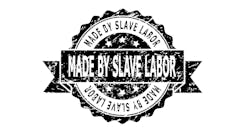For more than a year, employers have not had to file Form EEO-1 with the Equal Employment Opportunity Commission (EEOC), but that ends this year with a new filing deadline for the form of March 31.
Mandated for more than 50 years, the EEO-1 report is not intended for targeting individual employers. Instead, the data gathered is supposed to help EEOC form new policies and regulations. Required to file are employers with more than 100 employees, and all federal contractors or subcontractors with more than 50 employees.
In 2016 EEOC vastly expanded compensation data requirements for reporting about employees who are women, African-Americans and other ethnic group employees. To help employers prepare for the eventual filing of the massive amount of data the commission sought, the reporting deadline was extended for a year.
At the time, federal officials described the new form as a cornerstone of the Obama administration’s campaign to promote equal pay. “Collecting pay data is a significant step forward in addressing discriminatory pay practices,” declared then-EEOC chairman Jenny Yang.
Under the new requirements, employers were expected to supply W-2 income data for the number of employees it had in each of 10 different job categories. They then had to categorize their compensation in 12 different annual pay bands ranging from about $19,000 to more than $208,000. Using multiplication tables, it is easy to see how overwhelming this task would have been.
In fact, employers were shocked by the sheer scope and amount of the new data. EEOC estimated the total burden on employers at $53.5 million and 1.9 million hours per year. That was grossly understated, the U.S. Chamber of Commerce said. A Chamber survey of employers in 2016 showed the actual cost would be more than $400 million in labor costs alone, and came to a total burden of $1.3 billion a year.
Reversing a Wrong
Following President Trump’s inauguration last year, the White House office responsible for reviewing new federal rules ordered the new form be withdrawn. As a result, employers now are only required to file the same form they had used in 2016, before the new requirements were adopted. The filing only requires the same data that employers reported before the Obama EEOC changed the rules.
Employers also are expected file data they choose for any single payroll period in October, November or December of 2017. The new EEO-1 Form for the reports due by March 31 was released on Jan. 24.
EEOC adds that operations with fewer than 100 employees are required to file if the company is owned or affiliated with another company, or there is centralized ownership, control or management (such as central control of personnel policies and labor relations), which then make the group a single enterprise employing a total of 100 or more employees.
Excluded from the filing obligation are state and local governments, primary and secondary school systems, institutions of higher education, native American tribes and tax-exempt private membership clubs other than labor organizations. Also exempted are employers in Puerto Rico, the Virgin Islands and other American Protectorates.
Although the EEO-1 changes are great news, employers should remain wary because the campaign for pay transparency continues, along with the rising tide of pay discrimination claims, warns the law firm of Quarles & Brady. “Increasing numbers of state and local laws, activist shareholders of public companies, and company announcements of the results of their pay equity analyses continue the pay equity pressure on companies,” the firm notes.
Quarles & Brady recommends that employers consider having compensation analyses conducted by their attorneys, making the gathered data protected under attorney-client privilege.
One can only hope that somewhere in the new tax law is a way for employers to write off the expense of creating new systems to gather the data for the Obama-era EEOC form.
David Sparkman is founding editor of ACWI Advance (www.acwi.org), the newsletter of the American Chain of Warehouses Inc., as well as a member of the MH&L Editorial Advisory Board.




